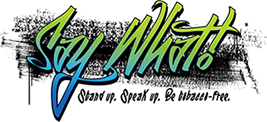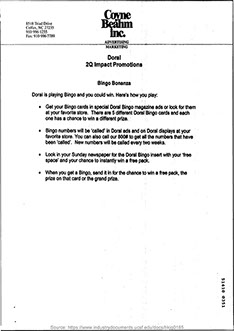
Module 2:
Who They Target
Big Tobacco & the American Indian/
Native American Community
Documents from the tobacco industry labeled Native Americans as coming from “broken homes” and “extreme poverty” with a “lack of direction and productive activity with little do and a sense of hopelessness.”
The tobacco plant has been used by Native American communities for centuries for ceremonial, medicinal, and social purposes. It holds a significant cultural and spiritual importance for many tribes. In the 1400’s when European settlers arrived in the Americas, they observed and adopted Native American tobacco practices.
As the tobacco industry grew over the next few centuries, companies began to commercialize and market tobacco products using Native American imagery, symbols, and rituals to sell their products.
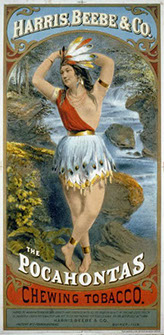
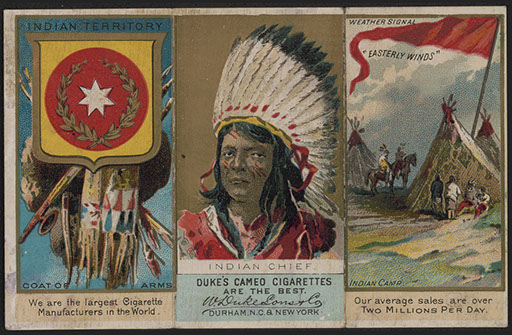
Harris, Beebe & Co.:
The Pocahontas Chewing Tobacco,
Printed 1868, New York
Dukes Cameo Cigarettes,
Printed 1885, New York
Red Man chewing tobacco began appropriating Native American culture in 1901 by using Native headdress images, which has carried on into today’s marketing. The images below are from the 1950s when ads for Old Gold, Velvet, and Natural American Spirit heavily portrayed headdresses in their marketing. Promotional items like coupons also featured a man in full traditional clothing, including a headdress and beaded regalia.

From the 1950s – 1960s, tobacco companies also used stereotypical language and valued traditions to promote their products on the radio, TV, and other media.
Changing their Tone
“In the more sophisticated atmosphere of the 1980s, there should be an opportunity to use the image of America’s original frontiersman: the Indian. The Indian is also the original cultivator of tobacco and the American Tobacco symbol.”
- American Tobacco Company
During the 1980s, tobacco companies shifted their tone from using negative stereotypes to creating a sense of respect towards this culture and their use of tobacco.
Companies implemented coordinated strategies to increase sales to minority consumers and improve the companies’ overall image and credibility with Corporate Responsibility programs.
• Philip Morris donated money to the American Indian College Fund, American Indian
Higher Education Consortium, Native American Rights Fund, and the Arizona Food
Banks that served Native Americans.
• R.J. Reynolds provided grants to “preserve, promote and advance American Indian
self-sufficiency, language and culture.”
• United States Tobacco sponsored rodeo events and pow-wows popular with youth.
They awarded $135,000 each year to rodeo students.
• Philip Morris created the “Marlboro Unlimited” sweepstakes featuring themed gifts
and train trips thorugh Tribal lands highlighiting Tribal cultural attractions.
Companies also used price reductions, coupons and giveaways, casino and bingo promotions, and indirectly targeted youth as young as 8 years old with a youth smoking prevention program.
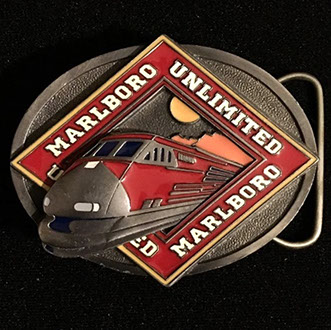
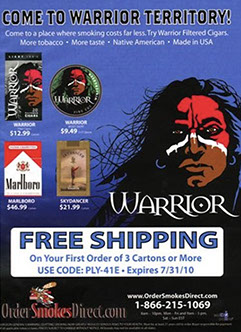
Internal Tobacco Document
R.J. Reynolds
1996
Belt Buckle
R.J. Reynolds
Circa 1980s
Claiming their Product is “Natural”
"Messages of a pesticide-free and additive-free product resonate with consumers, as the American Indian imagery serves as a reminder of tobacco’s original use in its natural state.”
- Philip Morris
In the 1990s, tobacco companies started using the word “natural” to describe tobacco products as safe and healthy. Advertisements depicted a spiritual or sacred connection to the world as a way for companies to make a profit in the public’s interest of all things natural and healthy.
The most notorious brand, Natural American Spirit was sold directly to a small number of retailers, focusing on health food stores, smoke shops, coffee bars, independent grocers, and gift stores to further reinforce the ‘natural’ aspect of their product.
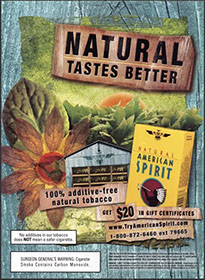
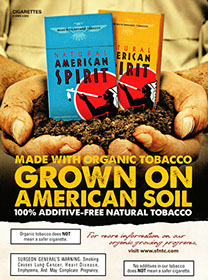
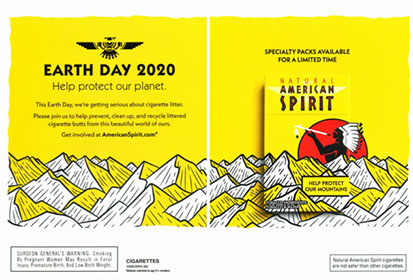
What’s happening today?
The tobacco industry still uses strategies to influence people to use their products. A recent congressional investigation found that JUUL targeted at least eight Native American tribes by giving away free devices to Tribal decision-makers, offering money and free low cost devices with a “switching program,” hiring tribal members to promote JUUL, and promote their youth smoking “prevention” program.
Watch the testimony here.
Interested in learning more?
Watch the Campaign for Tobacco-Free Kids Campaign for the Culture conversation series as a panel of Native American community leaders, health experts, and tobacco control advocates discuss how they’re working to take down Big Tobacco.
Sources for this section include research papers, Tobacco Industry Misappropriation of American Indian Culture and Traditional Tobacco, and Tobacco Industry Promotional Strategies Targeting American Indians/Alaska Natives and Exploiting Tribal Sovereignty, as well as the Truth Initiative and the Library of Congress.
Training Module
Modules
Home
Phone
512.245.8082
Mailing Address
Texas School Safety Center
ATTN: Say What Program
Texas State University
601 University Drive
San Marcos, TX 78666

Say What! was created and designed by young people from across Texas and connects students interested in eliminating tobacco from their schools and communities. The Say What! movement is funded by the Texas Department of State Health Services through a contract with the Texas School Safety Center at Texas State University.
